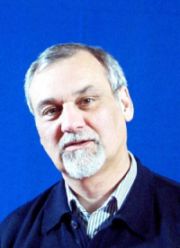OFC 2006 Workshop
"The Future of SOA"
Place: Ballroom B, Anaheim, Convention Center, California, USA
Time: Monday, March 6, 2006, 1 pm - 4 pm
Workshop Organizers: ; Prof. Dr. N. Dutta
| Main | |
| Panelist | |
| Program |
Main
Workshop Description:
The Future of SOAs:
Semiconductor Optical Amplifiers (SOAs) have been a topic of intense research for over twenty years. Although SOAs have lower saturation powers than fiber amplifiers, they are most unique because they cover the whole spectral range from 1300 to 1600 nm with sufficient gain for most access and medium-haul applications. A recent router introduced by startup Infinera clearly exploits SOAs not only to boost signal power but also demonstrates the benefit from the monolithic integration of SOAs with other InP based materialsain.
High nonlinearity of SOA is most unique among all known optical materials - it has led to the development of a new class of commercially available nonlinear all-optical products. This includes wavelength conversion where data on a signal at wavelength l1 is converted to data at another wavelength l2. Optical demultiplexing where a very high speed ( > 100 Gb/s) optical data is converted to several tributaries of low speed ( ~ 10 to 20 Gb/s) data for information retrieval using conventional electronic means. Optical clock recovery where a clock signal (timing signal which determines the positions of the 1`s and 0`s ) are generated from the high speed optical data signal. SOA is also suitable for many all optical processing applications such as label swapping, optical header recognition and optical switching. All-optical signal processing is expected to become increasingly important in future ultrahigh capacity telecommunication networks. The development of all optical logic technology is important for a wide range of applications in all optical networks, including high speed all optical packet routing, and optical bit pattern recognition. Recently SOAs have found new applications for FTTx and non-telecommunications fields, which has triggered a new interest in the technology.
After a short introduction on the theory and concepts behind SOAs including new materials such as Quantum Dots, we will discuss recent trends in industries and highlight new applications not only in the field of telecommunications but also in the field of medicine and related fields.
The workshop organizers are , University of Karlsruhe, Germany & Prof. Dr. N. K. Dutta, University of Connecticut, USA and author of a new book on "Semiconductor Optical Amplifiers". Both of the workshop organizers have worked for many years with SOAs, both in the industries and at the university and have generated well over 100 publications in the field.
Panelist
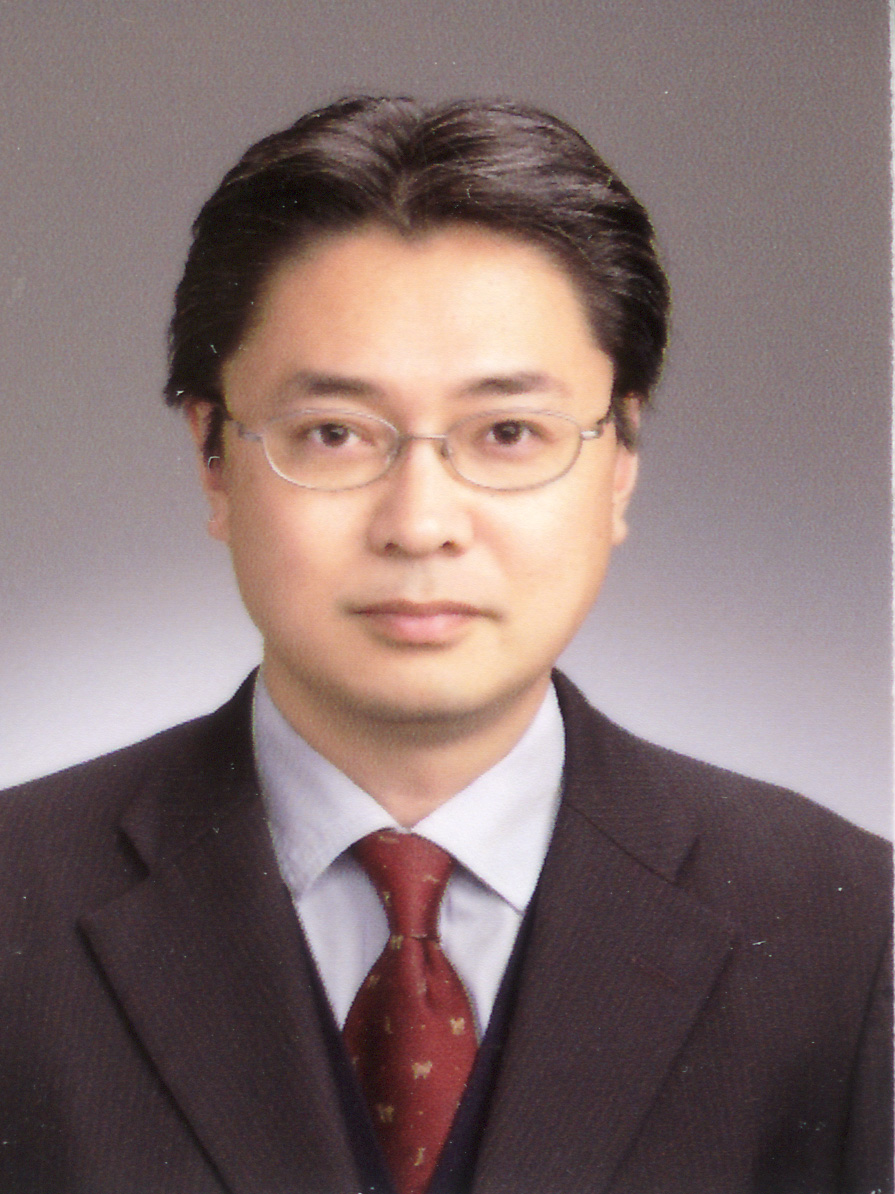 |
K. Morito, Fujitsu, JapanBiographyKen Morito was born in Saitama Prefecture, Japan, in 1964. AbstractI will introduce our 1550 nm polarization-insensitive SOAs with high-power and low-noise characteristics which we have developed for linear applications such as broadband optical amplifiers and optical gate switches. Our polarization insensitive strained-MQW SOA chip exhibited a high fiber-coupled saturation output power of +20 dBm and a low fiber-coupled NF of 6.0 dB with a low PDG of 0.6 dB. Additionally our polarization insensitive SOA module applying a polarization-sensitive MQW SOA chip in a polarization diversity configuration exhibited a high saturation output power of +22 dBm and a low NF of 5.7 dB with a low PDG of 0.5 dB. Abstract
|
|
|
B. Sartorius, HHI, GermanyBiographyBernd Sartorius studied physics in Frankfurt and Berlin. He received his PhD from the Technical University of Berlin in 1982. He then joined the Heinrich-Hertz-Institute for Telecommunications, where he first worked on optical techniques for characterisation of semiconductors. In 1991 he became head of a technological project developing semiconductor optical amplifiers. He focussed the project work on devices for all-optical signal processing. Novel (patented) types of multi-section lasers/amplifiers were developed and applied especially for clock recovery and decision in all-optical 3R signal regenerators. Presently Dr. Sartorius is head of projects that cover the whole range from design and technology of semiconductor devices up to system experiments on high speed all-optical signal processing. AbstractIn SOAs the amplification process deplets the carrier density, and that saturates the gain after a certain light path. Commercial devices designed for linear amplification thus have lengths below 1 mm. In this contribution we discuss the potential of ultra-long SOAs (2…8mm ) for high speed all-optical processing applications. Novel physical effects (Two Wave Competition) are presented and the improved efficiency of optical nonlinearities is pointed out.
|
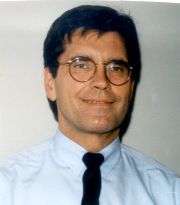 |
D. Bimberg, Technical University of Berlin, GermanyBiographyDieter Bimberg was born in Schrozberg, Germany, on July 10, 1942. He received the Diploma in physics and the Ph.D. degree from Goethe University, Frankfurt, in 1968 and 1971, respectively. From 1972 to 1979 he held a Principal Scientist position at the Max Planck-Institute for Solid State Research in Grenoble/France and Stuttgart. In 1979 he was appointed as Professor at the Department of Electrical Engineering, Technical University of Aachen. Since 1981 he holds the Chair of Applied Solid State Physics at Technical University of Berlin. Since 1990 he is Excecutive Director of the Solid State Physics Institute at the Technical University of Berlin, Berlin, Germany with a faculty of 10 and a staff of 150. Since 1994 he is chairman of the National Research Council „Center of Excellence“ on „Growth Related Properties of Nanostructures“ and since 1998 of the national „Center of Competence“ on „Nano-Optoelectronics“ of the German Federal Ministry of Research. Amongst others he hold guest professorships at the University of California in Santa Barbara and at Hewlett-Packard in Palo Alto/Ca. His honors include the japanese Oyo Buturi prize of Applied Physics, a honorary membership at the A.F.Ioffe Institute at St.Petersburg, the Russian State Prize in Science and Technology 2002, election to the German Academy of Natural Sciences 2004 and the Max-Born-Award 2006. He has authored more than 900 papers, patents, and books. His research interests include the physics of nanostructures and nanostructured devices, like quantum dot lasers and amplifiers, wide gap semiconductor heterostructures and high speed photonic devices. AbstractChip gain of 26 dB upon amplification of 1.3 µm picosecond pulses at frequencies up to 80 GHz is demonstrated for temperature stable QD-SOAs.
|
L. Zhang, Lucent, USAAbstractThe effect of p-type doping of the active region of multiple quantum well semiconductor optical amplifiers has been studied. Spectrogram measurements of the dynamics of the SOAs reveal that both gain and phase recovery times have been significantly reduced by the p-doped barriers of multiple quantum wells. 1/e Phase recovery time as short as 11 ps is demonstrated using this approach.
|
|
 |
L. Tongning LI, INPHENIX, USABiographyLisa Tongning Li received her B.S and M.S degree from the Optical and Laser technology department, Huazhong University of Science and Technology, in 1982 and 1984 respectively. From 1988 to 1991, she was a visiting researcher at the Institute of High Frequency and Quantum Electronics, Karlsruhe University in Germany. From 1994 to 1999 she was the Chief Engineer of Wuhan Telecommunication Devices Company, a joint venture between WRI and Corning in Wuhan China. Ms. Li specializes in the research, development and manufacture of InP and GaAs opto-electronics devices (including design, MOCVD epitaxy, chip processing and packaging). Since 1999 she has been the Sr. VP Engineering at AXON Photonics and INPHENIX where she is responsible for developing semiconductor optical amplifiers (SOAs) and super-luminescence light emitting diode (SLEDs) for medical, fiber sensor, defense, telecom and industrial applications. AbstractSOAs in Medical and FTTx applications |
S. Tsdaka, Kailight, IsraelBiographySagie, MSc in physics, has more than 20 years of experience in electro-optics research, development and project management. For the last 5 years Sagie is the CEO of Kailight photonics, where he is leading the company to achievements in development of all optical components for DWDM optical networks. Prior to Kailight Photonics, Sagie was core technology manager at Applied Materials, responsible for development of electro-optical tools for the semiconductor production industry. Before that, Sagie was head of several R&D projects at Soreq National Research Center in Israel, including development of solid state diode pumped lasers, laser transmitters and receivers, and more. Sagie has more than 10 patents and more than 30 publications in the fields of Electro-optics and telecommunication. AbstractSOAs plays key role in all optical devices for wavelength conversion and signal regeneration in DWDM networks. In such devices, SOAs supply the non linear active media within effects like XGM, XPM and FWM occurs. In this presentation several schemes for wavelength conversion and 2R regeneration are going to be reviewed, and emphasis will be given to a specific scheme used by Kailight for its commercial all optical device, the TASR. Some applications and results achieved with the TASR will be presented.
|
|
B. Stefanov, Alphion Corporation, Director of Product Development, USA
|
|
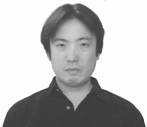 |
T. Akiyama, Fujitsu, Optical Semiconductor Device Research Lab., Fujitsu Laboratories Ltd., JapanBiographyTomoyuki Akiyama was born in Hiroshima, Japan, on August 25, 1970. He received his BE, ME, and Ph.D. degrees from the Department of Electronic Engineering, University of Tokyo, Tokyo, Japan, in 1993, 1995, and 1998, respectively. Since 1998 to the present, he is with Fujitsu Laboratories Ltd. From 1998 to 2001, he belonged to Femtosecond Technology Research Association, Tsukuba, Japan, where he started his pioneering works on quantum-dot semiconductor optical amplifiers. Positioned in Fujitsu Laboratories, he is currently engaged in commercialization of quantum-dot devices in optical communication industry. AbstractRecent developments of quantum-dot devices as optical amplifiers and regenerators are reviewed. The talk introduces unique properties of quantum dots and discusses their advantages in practical applications.
|
J. Zyskind, Optovia, USABiographyJohn Zyskind received his Ph.D. in physics from the California Institute of Technology where he was a Fannie and John Hertz Fellow. From Caltech he went to Bell Labs, where he was active in research leading to AT&T's introduction of optically amplified DWDM systems. At Bell Labs he led Lucent’s optical amplifier research for the MONET optical networking program. He was named Distinguished Member of Technical Staff in 1996 and received the Bell Laboratories President’s Gold Award in 1998. From 1999 to 2002 Dr. Zyskind was Director of Optical Transmission at Sycamore Networks, where he led the development of optical networking products. He is currently Senior Director of Engineering at Optovia where he leads optical amplifier development. Dr. Zyskind is an OSA Fellow and was the 2001 Technical Program Co-Chair and 2002 General Co-Chair of the Topical Meeting on Optical Amplifiers and Their Applications. AbstractOptical communications provides the largest and most important market for optical amplifiers. Erbium-doped fiber amplifiers revolutionized optical communications by enabling economical high capacity systems. EDFAs are the boosters, repeaters and preamplifiers of choice for a wide range of optical communications systems and are massively deployed. Commercial Raman amplifiers are now available and their deployment is growing rapidly because of their recognized value for reducing network costs. The extent to which SOAs will challenge the primacy of fiber amplifiers in these important applications will depend on their ability to better meet the cost and performance requirements.
|
|
 |
P. Heim, VP of Advanced Technology, COVEGA Corporation, USABiographyPeter Heim was born in Burlington, VT on March 26, 1960. He received a Ph.D. in electrical engineering from the University of Maryland in 1996, and a B.A. and M.A., both in physics, from Dartmouth College in 1982 and 1984, respectively. He was a member of the technical staff at the MITRE Corporation from 1984-1990 where he developed high-speed GaAs optoelectronic MMICs for satellite communication systems. In 1998, he co-founded Quantum Photonics, Inc. to commercialize high-power SOAs and related gain devices pioneered in Prof. Mario Dagenais’ research group at the University of Maryland. In 2003, Quantum Photonics merged with Codeon Corporation to form Covega, which is now the market-leading commercial supplier of SOAs. Currently, he is VP of Advanced Technology responsible for developing Covega’s next generation SOA, BOA, SLD and tunable gain chip products. He has published more than 30 technical papers and is an inventor on numerous issued and pending patents. AbstractNew markets continue to emerge and mature for SOAs. The market opportunities for discrete SOAs are reviewed and options for cultivating successful commercial applications are discussed.
|
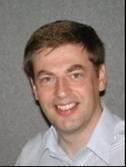 |
A. Poustie, CIP, Great BritainBiographyDr. Alistair Poustie is an optical systems and device scientist for the Centre for Integrated Photonics (CIP). CIP is a world-leading supplier of advanced SOA devices and SOA-based products. Dr. Poustie has extensive experience in SOAs for a variety of network applications, including all-optical processing/regeneration, electro-optic switching and FTTH devices. Recently, he has been involved in the development of new discrete SOA devices and low cost, hybrid integrated SOA-based devices for advanced applications. He has published widely on SOA-based devices in journal & conference papers and is an inventor on over 15 patents. AbstractNew markets are emerging for advanced SOA-based devices, where the important customer requirements are not only high specification devices but also low cost packaging, especially for multiple SOA arrays. Novel high performance SOA devices are described and practical strategies for reducing packaging and operational costs are discussed.
|
Program
Workshop Schedule
| Opening remarks (J. Leuthold & N. Dutta) | |
|
1. Theory, Materials and SOA Types |
|
| Speakers from component investigations: |
|
| N. Dutta, University of Connecticut, USA | Introduction into the theory of the SOA |
| B. Sartorius, HHI: |
Ultra-long SOAs: High speed effects for signal processing
|
| D. Bimberg, TU Berlin: | Bulk, Quantum well, Quantum-Dot SOA's |
| L. Zhang, Lucent: | QW-Modulation Doped SOAs |
| 2. Applications of SOAs | |
| Speakers from companies: | |
| L. Tongning LI, INPHENIX: | SOA in medicine and FTTx |
| S. Tsdaka, Kailight: |
SOAs for Signal Regeneration, Wavelength Conversion
|
| B. Stefanov, ALPHION: |
Gating SOA, Coarse WDM applications, Channel Labeling
|
| T. Akiyama, Fujitsu: | Novel applications with QD SOAs |
| J. Zyskind, Optovia: | EDFA and Raman fiber amplifiers |
| K. Morito, Fujitsu: | The linear SOA and its applications |
Coffe Break |
|
| 3. The Business Case |
| P. Heim, Covega: | Market status and strategies for getting SOAs into the market |
| A. Poustie, CIP: | Emerging markets for advanced SOA-based devices |
| 4. Final Remarks | |
| The End |
Official OFC Homepage: http://www.ofcnfoec.org

